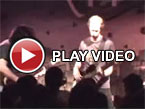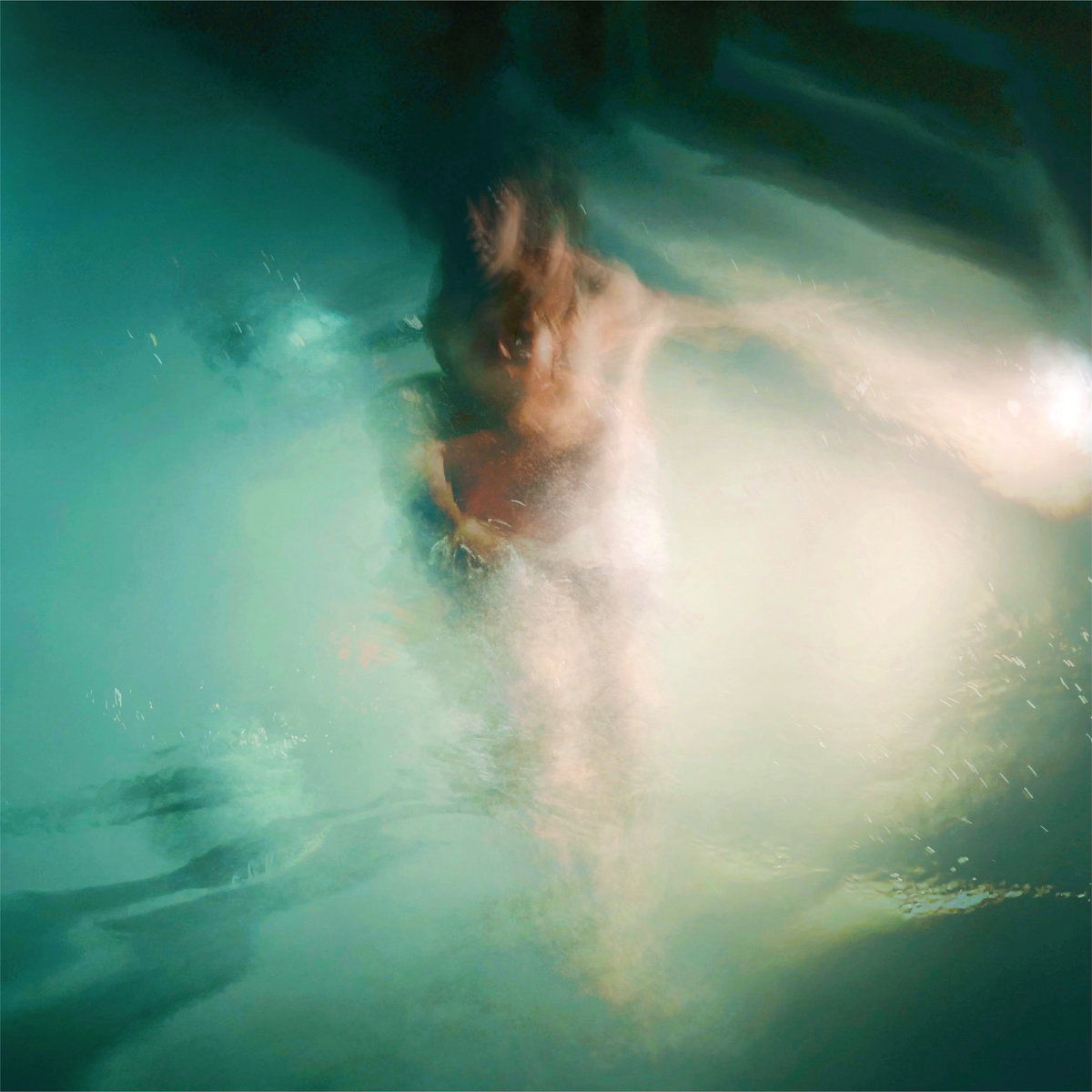 This latest full-length from Lucy Liyou is described as a "rumination on the double-sidedness of trauma and love." The title is a Korean idiom with multiple meanings ("could mean anything from fanciful daydreams to nightmarish terrors") and was chosen very deliberately, as Liyou is fascinated by what our dream lives say about us and our subconscious desires. Interestingly, Dog Dreams is billed as only Liyou's second album (she is quite a prolific artist), but apparently everything other than 2020's Welfare is considered either an EP or a collaboration. In some ways, Dog Dreams feels like a logical evolution from that debut, but I was surprised to find that Liyou moved away from her text-to-speech narratives, as I previously thought that element was absolutely central to her aesthetic. In their place, however, are elusive Robert Ashley-esque dialogues of murmuring voices hovering at the edge of intelligibility. While I expected to miss the playfully dark humor of those robotic voices quite a lot (I found them very endearing), the newly tender and human voices fit the dreamlike beauty of Dog Dreams' three sound collages quite nicely.
This latest full-length from Lucy Liyou is described as a "rumination on the double-sidedness of trauma and love." The title is a Korean idiom with multiple meanings ("could mean anything from fanciful daydreams to nightmarish terrors") and was chosen very deliberately, as Liyou is fascinated by what our dream lives say about us and our subconscious desires. Interestingly, Dog Dreams is billed as only Liyou's second album (she is quite a prolific artist), but apparently everything other than 2020's Welfare is considered either an EP or a collaboration. In some ways, Dog Dreams feels like a logical evolution from that debut, but I was surprised to find that Liyou moved away from her text-to-speech narratives, as I previously thought that element was absolutely central to her aesthetic. In their place, however, are elusive Robert Ashley-esque dialogues of murmuring voices hovering at the edge of intelligibility. While I expected to miss the playfully dark humor of those robotic voices quite a lot (I found them very endearing), the newly tender and human voices fit the dreamlike beauty of Dog Dreams' three sound collages quite nicely.
Unsurprisingly, Dog Dreams has its roots in Liyou's own recurring dreams, but it is also a dialogue of sorts with co-producer Nick Zanca, as the two artists first worked on the album separately before convening in Zanca's studio to shape the final version. The opening title piece provides a fairly representative introduction to the album, as a melange of faint pops, hisses, and crackles slowly blossoms into a pleasantly flickering and psychotropic collage of tender piano melodies, water sounds, and sensuously hushed vocals. Interestingly, the aforementioned melange of strange sounds came from recordings of saliva (albeit "dilated and rendered unfamiliar through Zanca's adroit mixing"), which is definitely not something that I would have guessed on my own. Characteristically, the vocals are the best part of the piece, as Liyou and Zanca's voices enigmatically mingle, overlap, and harmonize in a fractured, shapeshifting dialogue. Uncharacteristically, however, "Dog Dreams" transforms into something resembling Xiu Xiu's Jaime Stewart interpreting a tender R&B-tinged ballad from a Disney soundtrack. While I certainly did not see that curveball coming, it is very on-brand for Liyou, as she has always been an inventive magpie keen to assimilate any and all compelling sounds and ideas that bleed into her life.


 Vandever's first solo album was recorded in three days and features her improvising on (mainly) trombone, effects, and voice. The improvised approach never shoves this music even an inch away from clarity, deftness, and emotional depth. Every piece feels fresh, abstract and dreamlike—as if she's channeling spirit voices from elsewhere—but all are restrained by the beguiling warmth, subtle tension, and comforting understatement of her sonorous playing. It's marvelous to hear the trombone burst, or maybe a more accurate descriptor would be slide, free of all genre association.
Vandever's first solo album was recorded in three days and features her improvising on (mainly) trombone, effects, and voice. The improvised approach never shoves this music even an inch away from clarity, deftness, and emotional depth. Every piece feels fresh, abstract and dreamlike—as if she's channeling spirit voices from elsewhere—but all are restrained by the beguiling warmth, subtle tension, and comforting understatement of her sonorous playing. It's marvelous to hear the trombone burst, or maybe a more accurate descriptor would be slide, free of all genre association. Letters From A Forest uses snippets of conversation, sung and spoken lyrics, simple guitar and piano lines, and (as Christian puts it) fake strings, to create what we can call collage atmospherics. The sum of these parts is a tender sounding album, crammed full of romanticized lyrics with a tough, honest, edge and a wondrous stream of consciousness style. When hearing tracks like the "The Ballad of Martin and Caroline,"—a tale of fates deeply entwined in a doomed love spiral—I felt like I was half napping or jet lagged in a spare room, overhearing friends babbling to one another about deceased acquaintances,musical heroes, old records,chance meetings, and the places where it all happened. As such, Letters is an ode to an array of magnificent and magnificently flawed people (some well known, others characters from local legend). It is a sketchbook of notes, more poetic than pathetic, with a palpably emotional tug, celebrating the contradictory nature of life.
Letters From A Forest uses snippets of conversation, sung and spoken lyrics, simple guitar and piano lines, and (as Christian puts it) fake strings, to create what we can call collage atmospherics. The sum of these parts is a tender sounding album, crammed full of romanticized lyrics with a tough, honest, edge and a wondrous stream of consciousness style. When hearing tracks like the "The Ballad of Martin and Caroline,"—a tale of fates deeply entwined in a doomed love spiral—I felt like I was half napping or jet lagged in a spare room, overhearing friends babbling to one another about deceased acquaintances,musical heroes, old records,chance meetings, and the places where it all happened. As such, Letters is an ode to an array of magnificent and magnificently flawed people (some well known, others characters from local legend). It is a sketchbook of notes, more poetic than pathetic, with a palpably emotional tug, celebrating the contradictory nature of life. This is the second duo collaboration between Chalk and Rebilly, as the pair previously surfaced with L'état Intermédiaire back in 2018. Their shared history goes back to at least 2012 though, as they teamed up with Vikki Jackman for A Paper Doll's Whisper Of Spring. While details about Tsilla are less scarce than usual due to its release on An'archives rather than Chalk's famously terse Faraway Press imprint, I still know very little about Rebilly other than the fact that he plays the clarinet. Beyond that, I am unwilling to hazard any guesses about who is playing what here, as both artists' contributions are largely blurred into a painterly haze (not entirely unfamiliar territory for Chalk). Far more relevant than the instrumentation is the album's inspiration: engraver Cécile Reims, whose "denuded landscapes," "spiraling abstractions," and "unearthly radiance" may have inspired Chalk's visual art as well. If not, Reims is at least a kindred spirit and her collaborations with Hans Bellmer, Leonor Fini, and Salvador Dali probably make a decent enough consolation prize. Reims's deepest impact on Tsilla may have been upon the process rather than the outcome, however, as the pair set out to honor her "tender weaving of emotional complexity carved with the hand-held and simple tools of artisans" in their own way ("a similar transfiguration of base materials"). Regardless of how it was made, Tsilla is quite a unique album in the Chalk canon, as the best pieces evoke a beautifully nightmarish strain of impressionism.
This is the second duo collaboration between Chalk and Rebilly, as the pair previously surfaced with L'état Intermédiaire back in 2018. Their shared history goes back to at least 2012 though, as they teamed up with Vikki Jackman for A Paper Doll's Whisper Of Spring. While details about Tsilla are less scarce than usual due to its release on An'archives rather than Chalk's famously terse Faraway Press imprint, I still know very little about Rebilly other than the fact that he plays the clarinet. Beyond that, I am unwilling to hazard any guesses about who is playing what here, as both artists' contributions are largely blurred into a painterly haze (not entirely unfamiliar territory for Chalk). Far more relevant than the instrumentation is the album's inspiration: engraver Cécile Reims, whose "denuded landscapes," "spiraling abstractions," and "unearthly radiance" may have inspired Chalk's visual art as well. If not, Reims is at least a kindred spirit and her collaborations with Hans Bellmer, Leonor Fini, and Salvador Dali probably make a decent enough consolation prize. Reims's deepest impact on Tsilla may have been upon the process rather than the outcome, however, as the pair set out to honor her "tender weaving of emotional complexity carved with the hand-held and simple tools of artisans" in their own way ("a similar transfiguration of base materials"). Regardless of how it was made, Tsilla is quite a unique album in the Chalk canon, as the best pieces evoke a beautifully nightmarish strain of impressionism.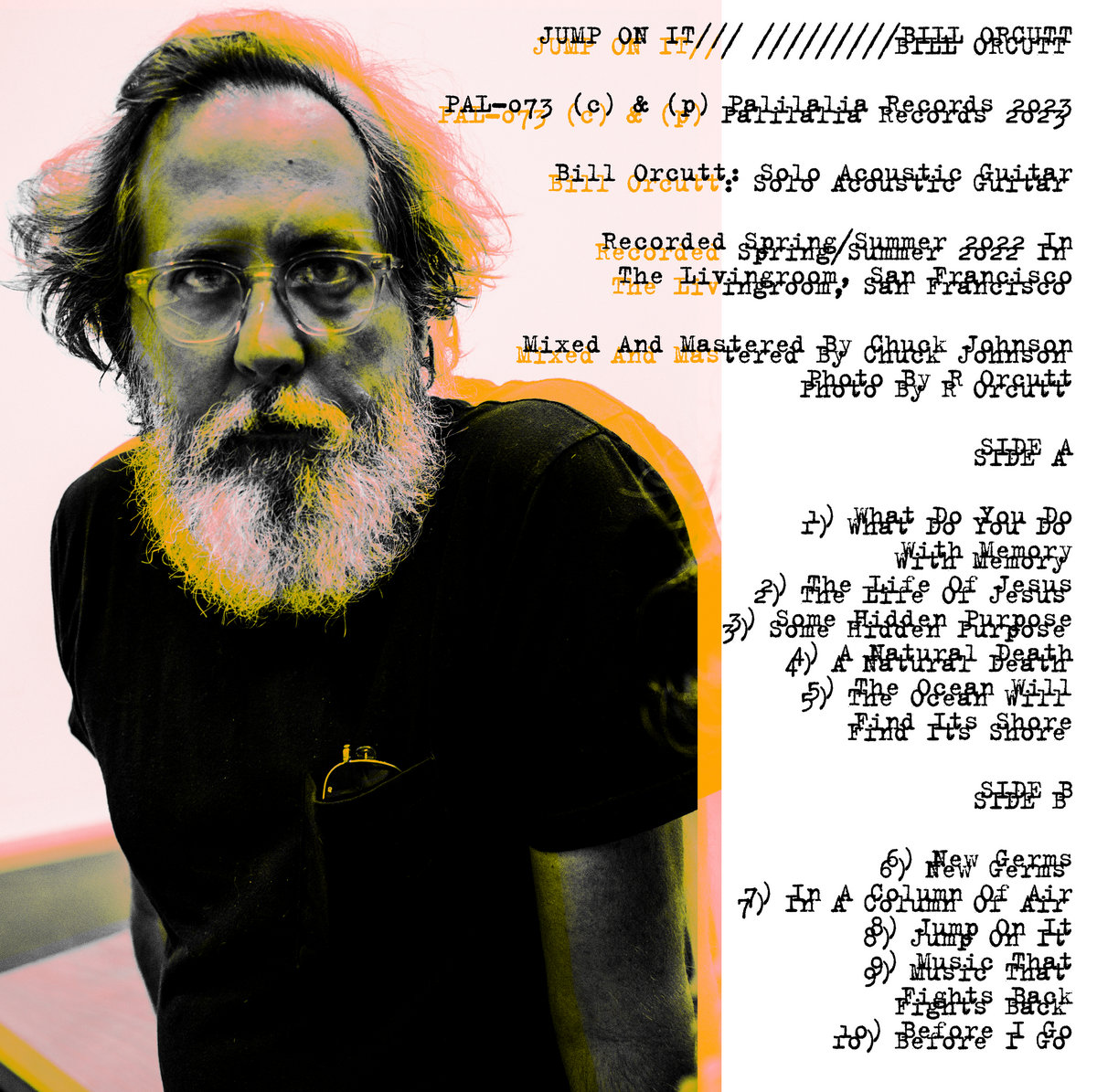 This latest LP from San Francisco-based guitar visionary Bill Orcutt is a spiritual successor of sorts to 2013's A History of Every One, as that was apparently his last solo acoustic guitar album. The resemblance between the two albums largely ends there, however, as Jump On It is as different from the deconstructed standards of History as it is from last week's Chatham-esque guitar quartet performance for NPR. While I do enjoy Orcutt's Editions Mego solo era quite a bit, there is no denying that his artistry has evolved dramatically over the last decade and his recent work definitely connects with me on a deeper level. In more concrete terms, Orcutt's work no longer resembles the choppy, convulsive, and possessed-sounding fare of History, as he has since reined in his more fiery, passionate impulses enough to leave more room for passages of tender, simple beauty. In fact, Jump On It might be the farthest that the balance has swung towards the latter, as the characteristic Orcutt violence is a rare presence in the collection of quietly lovely and spontaneous-sounding guitar miniatures.
This latest LP from San Francisco-based guitar visionary Bill Orcutt is a spiritual successor of sorts to 2013's A History of Every One, as that was apparently his last solo acoustic guitar album. The resemblance between the two albums largely ends there, however, as Jump On It is as different from the deconstructed standards of History as it is from last week's Chatham-esque guitar quartet performance for NPR. While I do enjoy Orcutt's Editions Mego solo era quite a bit, there is no denying that his artistry has evolved dramatically over the last decade and his recent work definitely connects with me on a deeper level. In more concrete terms, Orcutt's work no longer resembles the choppy, convulsive, and possessed-sounding fare of History, as he has since reined in his more fiery, passionate impulses enough to leave more room for passages of tender, simple beauty. In fact, Jump On It might be the farthest that the balance has swung towards the latter, as the characteristic Orcutt violence is a rare presence in the collection of quietly lovely and spontaneous-sounding guitar miniatures. Finally seeing the light of day after two years of production related delays, with the recordings dating back even longer than that, this collaboration between Daniel Burke (IOS) and the late Stefan Weisser (Z'EV) could almost be a time capsule, except the sound of it is entirely timeless. Recorded and mixed between 2008 and 2012, the two lengthy pieces that make up this self-titled album clearly bear the mark of both individuals, but mesh together beautifully in the very different sounding sides of the record.
Finally seeing the light of day after two years of production related delays, with the recordings dating back even longer than that, this collaboration between Daniel Burke (IOS) and the late Stefan Weisser (Z'EV) could almost be a time capsule, except the sound of it is entirely timeless. Recorded and mixed between 2008 and 2012, the two lengthy pieces that make up this self-titled album clearly bear the mark of both individuals, but mesh together beautifully in the very different sounding sides of the record. A 10" record rigidly divided into four different pieces (each mostly around four minutes in length), this new work from the enigmatic sounding, long-standing UK project is mostly centered around the same authoritarian lyrical elements, but each differs significantly in their compositional approach. A complex mix of styles define each piece, neither of which are too similar to another, but are unquestionably Contrastate, and showcases all of the unique sounds they are known for.
A 10" record rigidly divided into four different pieces (each mostly around four minutes in length), this new work from the enigmatic sounding, long-standing UK project is mostly centered around the same authoritarian lyrical elements, but each differs significantly in their compositional approach. A complex mix of styles define each piece, neither of which are too similar to another, but are unquestionably Contrastate, and showcases all of the unique sounds they are known for.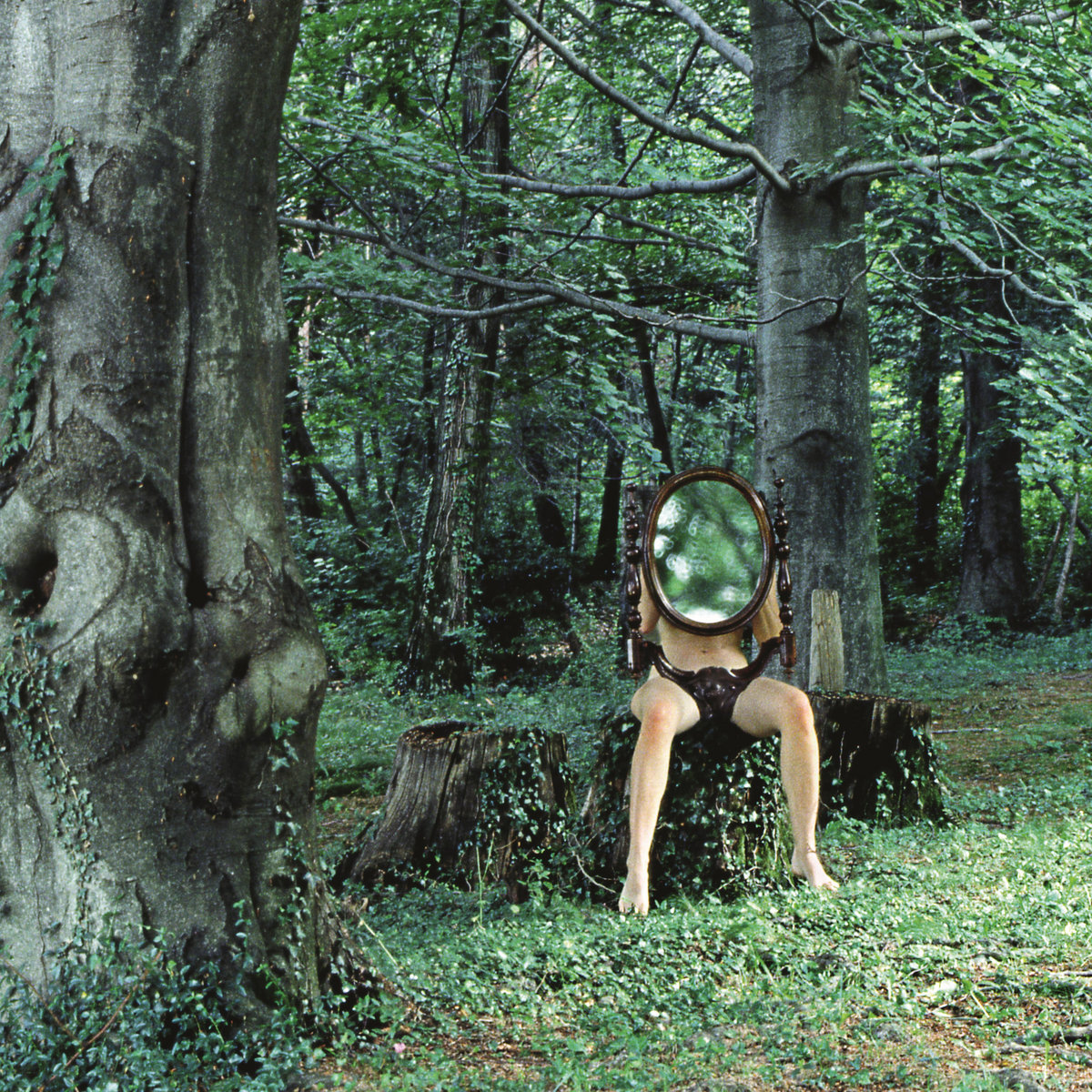 This eleventh album from Germany's Kammerflimmer Kollektief is not my first exposure to the project, but it did succeed in making me wonder why I have not been a passionate fan of their work before now. Admittedly, the idea of harmonium-driven free-form jazz/psychedelia is not quite my cup of tea on paper, which goes a long way towards explaining why I was so slow to embrace this project, yet the right execution can transform just about anything into gold and this foursome are extremely good at what they do. It also does not hurt that the Kammerflimmer gang have some intriguing and unusual inspirations, as they namecheck both Franz Mesmer and underheard German psychonauts The Cocoon in addition to the requisite nod to Can. Kammerflimmer Kollektief certainly assimilate those influences in a unique way though, as the best songs on Schemen sound like a killer post-rock/psych band blessed with an unusually great rhythm section and real talents for roiling guitar noise, simmering tension, and volcanic catharsis.
This eleventh album from Germany's Kammerflimmer Kollektief is not my first exposure to the project, but it did succeed in making me wonder why I have not been a passionate fan of their work before now. Admittedly, the idea of harmonium-driven free-form jazz/psychedelia is not quite my cup of tea on paper, which goes a long way towards explaining why I was so slow to embrace this project, yet the right execution can transform just about anything into gold and this foursome are extremely good at what they do. It also does not hurt that the Kammerflimmer gang have some intriguing and unusual inspirations, as they namecheck both Franz Mesmer and underheard German psychonauts The Cocoon in addition to the requisite nod to Can. Kammerflimmer Kollektief certainly assimilate those influences in a unique way though, as the best songs on Schemen sound like a killer post-rock/psych band blessed with an unusually great rhythm section and real talents for roiling guitar noise, simmering tension, and volcanic catharsis. In the village of Stanton Drew, and dating from around 4,500 years ago, is the third largest complex of standing stone circles in England. David Colohan visited the site one rainy morning in early 2020 and was inspired by the mix of winter sunshine and eerie ancient atmosphere to create a record of his impressions. Fair enough, since people rarely send postcards from their travels anymore. Actually, the postcard analogy only works if it allows for someone designing a postcard when they get home, since Colohan's use of field recordings is minimal and he doesn't really create music in situ. He's done this before with other locations but A Lunar Standstill is easily his most consistent recording.
In the village of Stanton Drew, and dating from around 4,500 years ago, is the third largest complex of standing stone circles in England. David Colohan visited the site one rainy morning in early 2020 and was inspired by the mix of winter sunshine and eerie ancient atmosphere to create a record of his impressions. Fair enough, since people rarely send postcards from their travels anymore. Actually, the postcard analogy only works if it allows for someone designing a postcard when they get home, since Colohan's use of field recordings is minimal and he doesn't really create music in situ. He's done this before with other locations but A Lunar Standstill is easily his most consistent recording.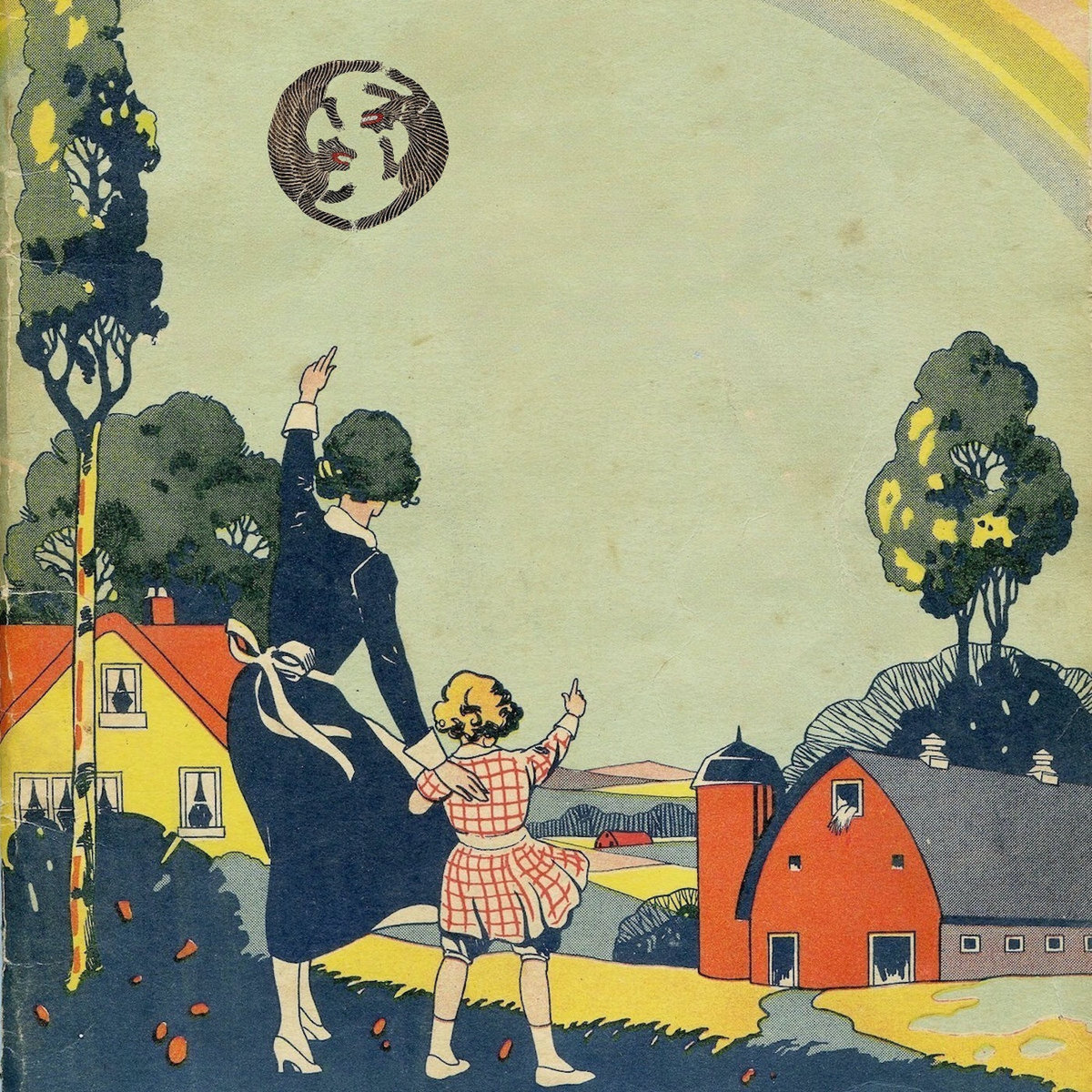 This latest release from husband and wife duo Zach & Denny Corsa appears to be their fifth full-length under the Nonconnah name (the duo were previously known as Lost Trail) and it is characteristically wonderful. As is the norm for Nonconnah, Unicorn Family was culled from several years of recordings featuring a host of eclectic collaborators (folks from Lilys, Half Japanese, Fire-Toolz, etc.) and those recordings have been expertly stitched together into beautifully layered and evocative soundscapes teeming with cool tape effects, thought-provoking samples, and killer shoegaze-inspired guitar work. In short, business as usual, but Nonconnah's business is consistently being one of the greatest drone projects on earth, so this is already a lock for one of my favorite albums of the year. Aside from the presence of a lovely lo-fi folk gem with actual singing, the only other notable departures from Nonconnah's existing run of gorgeous albums are shorter song durations than usual and the fact that the duo's samples have more of an eschatological bent. I suppose this album is an unusually focused and distilled statement as well, but that feels like a lateral move given how much I loved the sprawling immensity of Don't Go Down To Lonesome Holler.
This latest release from husband and wife duo Zach & Denny Corsa appears to be their fifth full-length under the Nonconnah name (the duo were previously known as Lost Trail) and it is characteristically wonderful. As is the norm for Nonconnah, Unicorn Family was culled from several years of recordings featuring a host of eclectic collaborators (folks from Lilys, Half Japanese, Fire-Toolz, etc.) and those recordings have been expertly stitched together into beautifully layered and evocative soundscapes teeming with cool tape effects, thought-provoking samples, and killer shoegaze-inspired guitar work. In short, business as usual, but Nonconnah's business is consistently being one of the greatest drone projects on earth, so this is already a lock for one of my favorite albums of the year. Aside from the presence of a lovely lo-fi folk gem with actual singing, the only other notable departures from Nonconnah's existing run of gorgeous albums are shorter song durations than usual and the fact that the duo's samples have more of an eschatological bent. I suppose this album is an unusually focused and distilled statement as well, but that feels like a lateral move given how much I loved the sprawling immensity of Don't Go Down To Lonesome Holler.